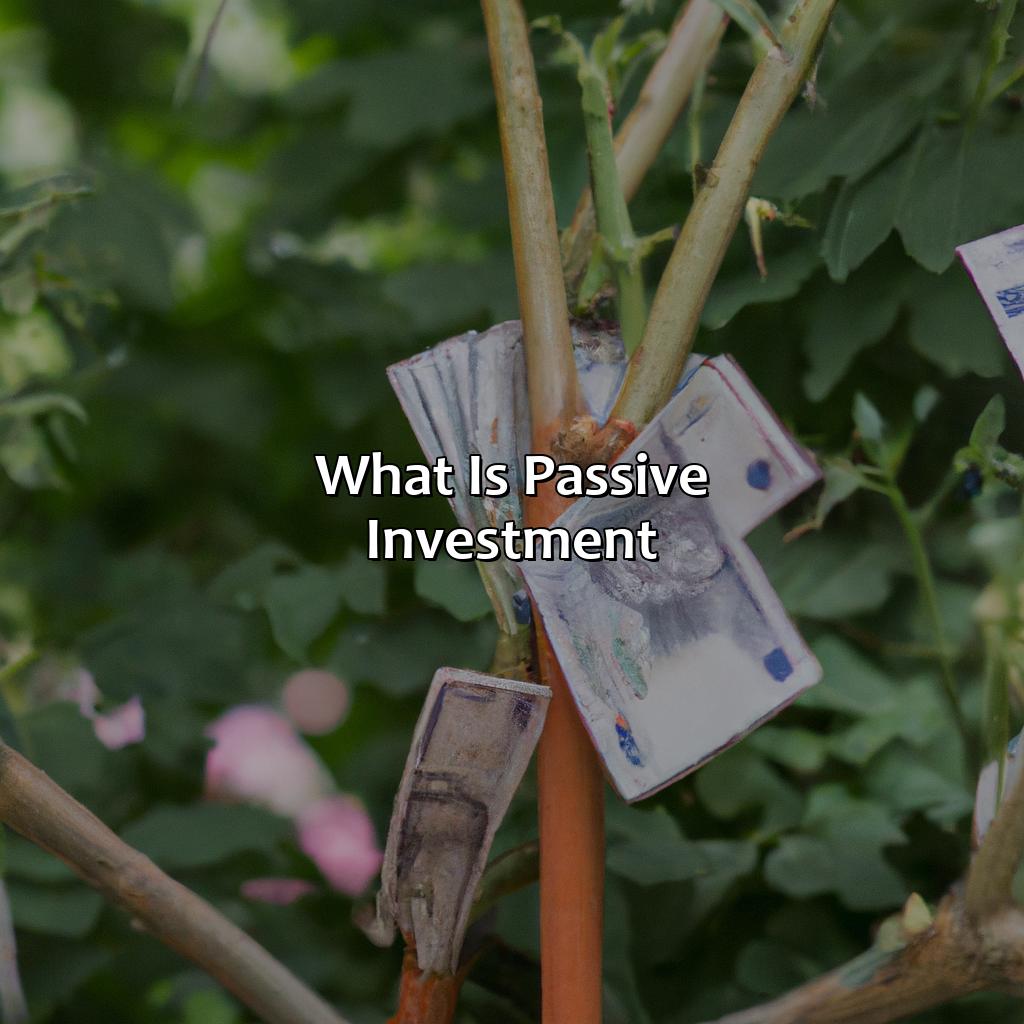What Is Passive Investment?
Key Takeaway:
- Passive investment refers to a long-term investment strategy in which investors buy and hold a portfolio of assets, such as index funds, ETFs, and REITs, without actively managing them.
- Index funds, ETFs, and REITs are the most popular types of passive investment vehicles, offering lower fees, greater diversification, and lower taxes than actively managed funds.
- Passive investment offers several advantages, including lower fees, greater diversification, and lower taxes, making it an attractive choice for investors seeking long-term, low-risk investment opportunities.
- Passive investment also has several disadvantages, including limited control, no personalized advice, and lower returns in certain cases, making it important for investors to carefully consider their goals and risk tolerance before investing passively.
Do you want to grow your wealth through investments, but don’t know where to start? Passive investment may be the answer. Discover what passive investment means and the potential benefits it offers.
Definition of Passive Investment
Passive investing refers to an investment strategy where the investor avoids frequent buying and selling of assets. It involves investing in a diversified portfolio with the aim of matching market performance. Passive investments often have lower fees and minimize risk as there is no attempt to beat the market. Instead, they seek to capture market returns by tracking benchmark indexes such as the S&P 500.
One advantage of passive investing is that it requires less time and effort than active investing as the portfolio requires little maintenance. Passive investment is an investment strategy that involves minimal buying and selling of assets. Instead, investors seek to capture market returns by investing in diversified portfolios that track benchmark indexes. This approach requires less time and effort than active investing and often carries lower fees. The aim is to match market performance and minimize risk, rather than attempting to beat the market. Portfolio maintenance is minimal, making it an attractive option for those seeking a simple strategy.
Passive investments have gained popularity in recent years due to the ease of investment and lower fees. The strategy is ideal for long-term investors who prioritize lower costs and want to capture market returns. However, it may not be suitable for those who wish to beat the market or have strong opinions on certain stocks or sectors.
In the early 1970s, John C. Bogle founded the first-ever passive investment product, the Vanguard 500 Index Fund. The fund aimed to track the S&P 500, and its success paved the way for other passive investment products. Today, passive investment products such as index funds and exchange-traded funds (ETFs) are widely available, making passive investing a viable option for investors.
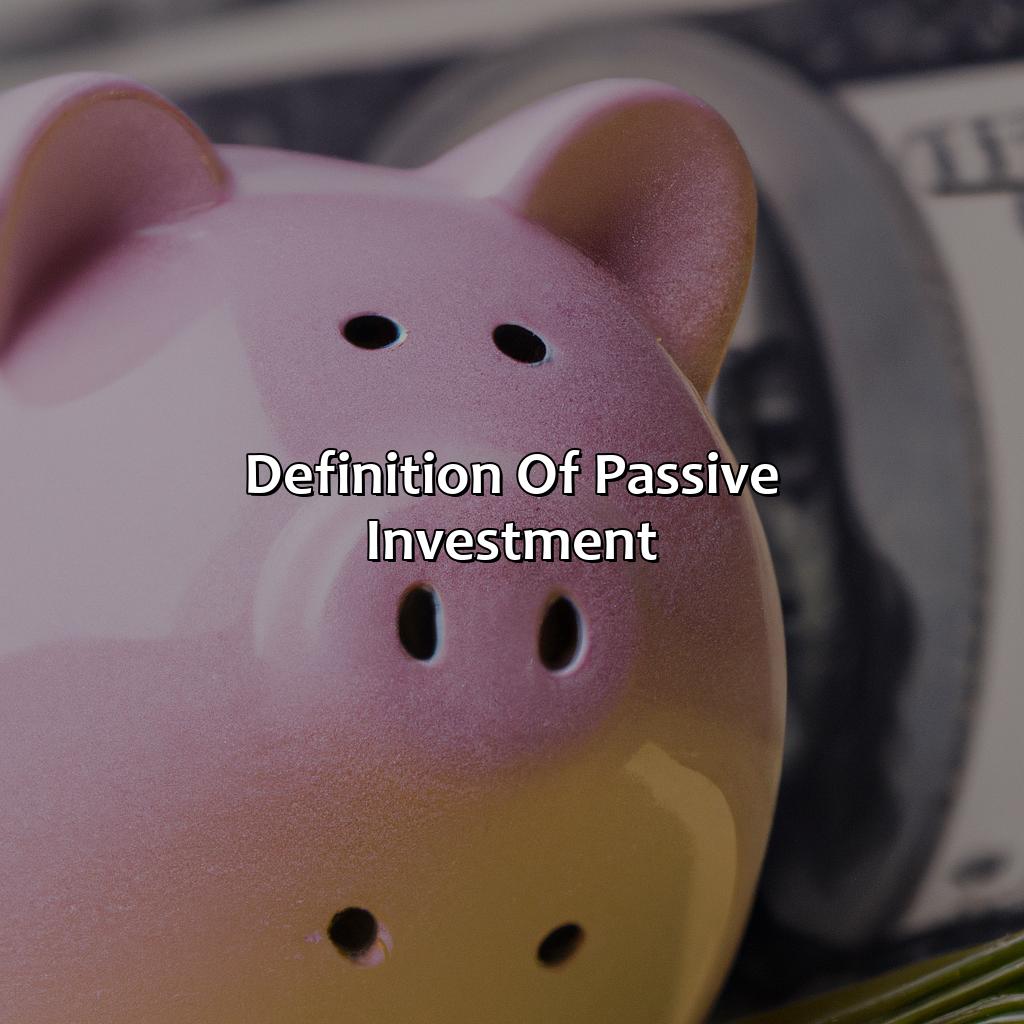
Image credits: retiregenz.com by Yuval Duncun
Types of Passive Investment
Passive Investing Categories Explained
Passive investment strategies are growing in popularity among investors due to their low-cost approach and ease of operation. In this article, we will delve into the various types of passive investment strategies that investors can use to build their portfolio.
Passive Investment Categories:
- Index Funds and Exchange-Traded Funds (ETFs)
- Mutual Funds
- Real Estate Investment Trusts (REITs)
- Robo-Advisors
- Target-Date Funds
- Passive Fund-of-Funds
These categories provide varied options for investors to invest in different asset classes. Index Funds and Exchange-Traded Funds (ETFs) track a specific index, Mutual Funds hold a pool of securities, Real Estate Investment Trusts (REITs) own and operate income-generating properties, Robo-Advisors use algorithms to provide investment recommendations, Target-Date Funds adjust the investment mix as the target date approaches, and Passive Fund-of-Funds invest in other passive funds.
Apart from these categories, investors can also opt for passive investment strategies like Factor Investing, Dividend Investing, and Bond Indexing, which cater to specific investment goals.
Passively-styled funds now account for a significant percentage of assets under management and have shown consistent long-term outperformance compared to their actively managed counterparts.
According to Morningstar, passive funds attracted $462 billion in 2020, recording an all-time high, with Invesco’s indexed funds growing an impressive 22%.
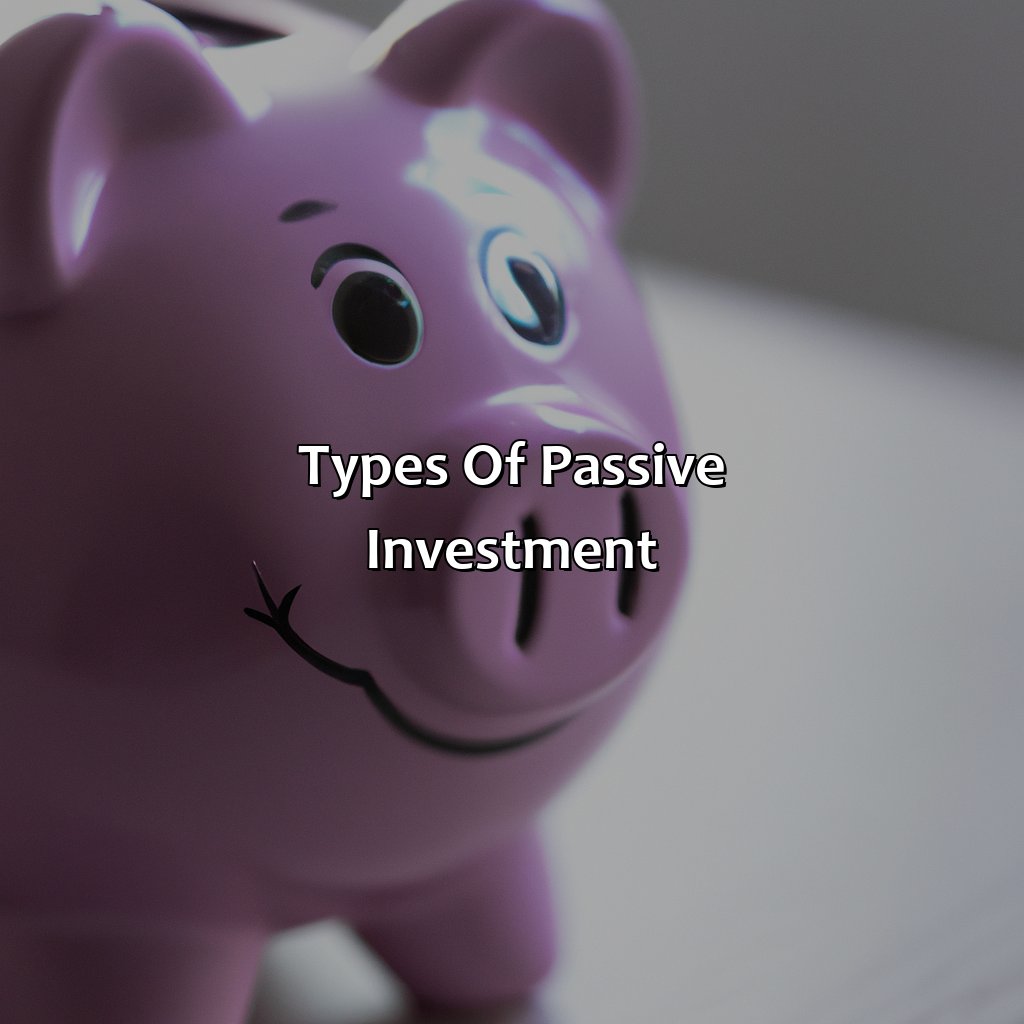
Image credits: retiregenz.com by David Washington
Advantages of Passive Investment
Passive Investing: Capitalizing on Long-Term Growth
Passive investing is a strategic long-term investment approach that emphasizes low-cost index fund investments over active trading. In this investment method, investors expect to achieve steady, long-term growth in their investment portfolio. What are the benefits of this strategy?
- Stability: Passive investments provide added stability to an investor’s portfolio. Index funds inherently minimize risk and offer protection against market volatility.
- Cost-Effective: Passive investing has considerably lower management fees compared to active investments. Transaction fees are also minimal since the index funds are bought and held for an extended period.
- Time-Efficient: By investing passively, investors are less burdened by stock-picking responsibilities, saving them time to focus on other ventures.
It is crucial to note that passive investing is not a one-size-fits-all strategy. It is not suited for those that are comfortable taking risks, preferring to actively trade, or seeking short-term profits.
A few years ago, a friend invested in a low-cost index fund to supplement her 401(k) plan. Though initially hesitant, her steady returns and lack of stress have made her a passionate advocate for passive investing. Her story reinforces the effectiveness of the long-term passive investment strategy.
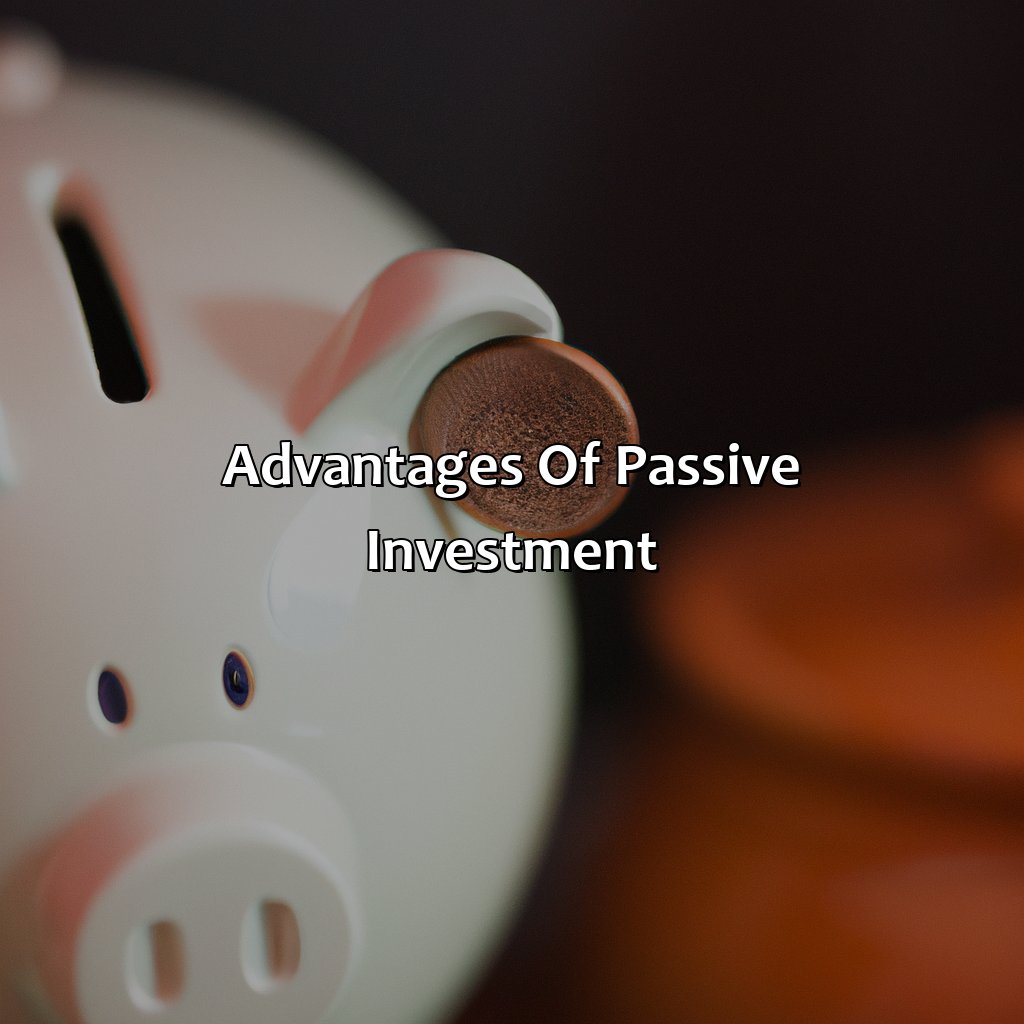
Image credits: retiregenz.com by James Duncun
Disadvantages of Passive Investment
Passive Investment Pitfalls
Passive investment strategies are increasingly popular among investors, but they do come with some drawbacks. Here are the top disadvantages of a passive investment approach:
- Limited Customization: Passive investment strategies tend to be less flexible and customizable when compared to active strategies that allow more discretion in stock picking.
- No Protection Against Market Volatility: Passive investors are vulnerable to market volatility and bearish trends, without any means of taking actions to safeguard their portfolio.
- Tracking Errors: Passive investing is based on the assumption that index returns are accurate. However, tracking errors can occur for various reasons, leading to losses or returns slightly deviating from the market index.
- Lack of Active Management: Passive strategies do not capitalize on market fluctuations and thus, lack the potential of higher returns offered by active management strategies.
- No Targeted Investing: Passive investing distributes investments across the market, making it challenging to target a particular sector, industry or company.
Passive investment can seem like a more relaxed approach compared to active investing, but it does come with its pitfalls. A passive investment portfolio has limited flexibility and no protection against market volatility or losses caused by tracking errors. While it might save time and cost, it does not provide the potential returns offered by smart active management strategies. To be a smart investor, one must carefully consider the benefits and drawbacks before opting for an investment strategy and take appropriate measures to safeguard their finances.
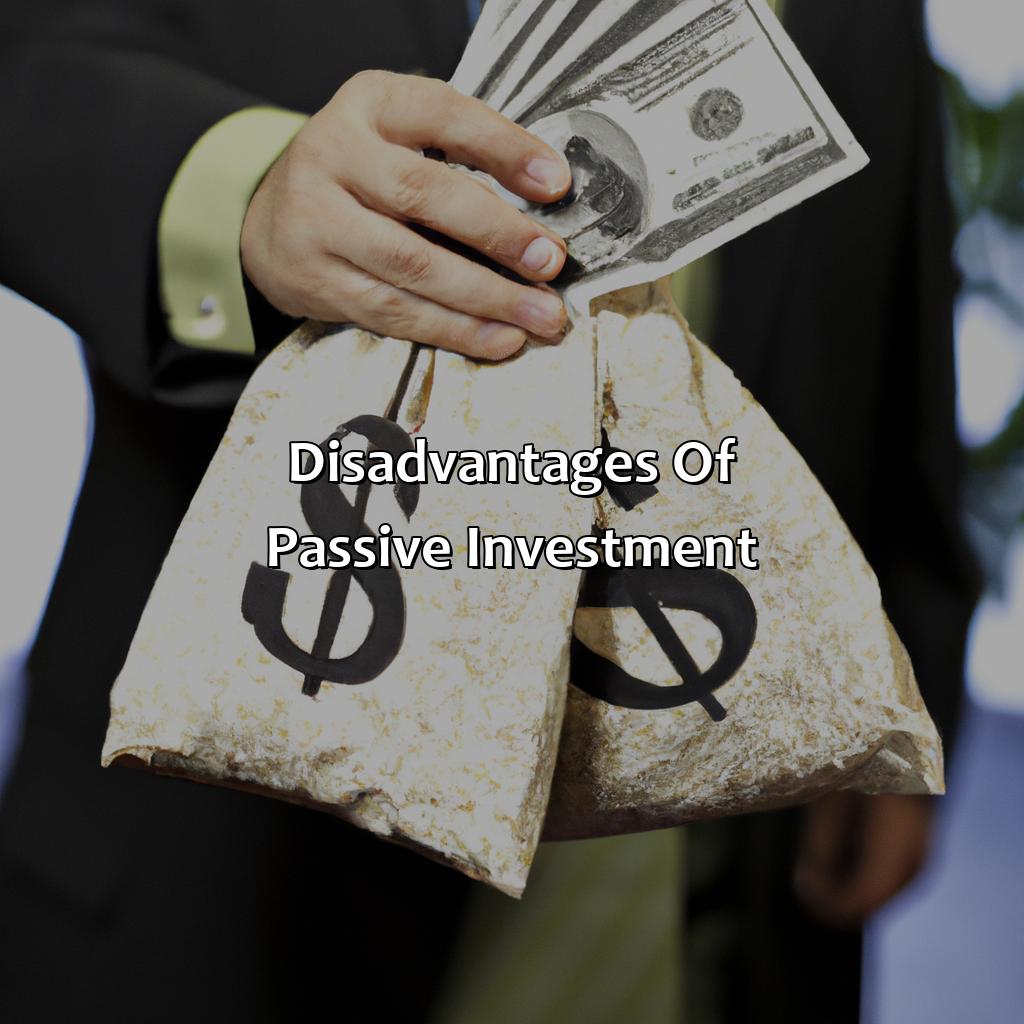
Image credits: retiregenz.com by Adam Arnold
Five Facts About Passive Investment:
Passive investment refers to a strategy that aims to maximize returns by minimizing transaction costs and reducing portfolio turnover. (Source: Investopedia)
Passive investment often involves investing in index funds or exchange-traded funds (ETFs) that track market benchmarks. (Source: The Balance)
Passive investing can be a low-cost alternative to active investing, which involves frequent buying and selling of securities. (Source: Forbes)
Passive investment has gained popularity in recent years as investors seek to simplify their portfolios and reduce the impact of market volatility. (Source: CNBC)
One of the key advantages of passive investing is that it can offer broad diversification across asset classes and sectors. (Source: Vanguard)
FAQs about What Is Passive Investment?
What is passive investment?
Passive investment refers to a long-term investment strategy that involves investing in a stock or a portfolio of stocks that mimic the performance of a market index like the S&P 500. The idea is to invest in stocks that are highly diversified and have a low-cost structure, which can minimize risks and generate steady returns over time.
How does passive investment differ from active investment?
Passive investment focuses on investing in a low-cost portfolio of stocks to match an index’s performance, while active investment involves buying and selling individual stocks based on market trends, news events, and investment strategies. While active investment can generate higher returns, it also incurs higher costs, and the risks may outweigh the rewards.
What are the advantages of passive investment?
Passive investment is an excellent strategy for novice investors due to its simple, hands-off approach. It eliminates the need to pick individual stocks, monitor the market actively, and react to short-term trends. The low management fees and transaction costs also make it an attractive option for those seeking higher returns with lower risks.
What are the risks associated with passive investment?
Passive investment carries market risks, meaning that your investment’s value can fluctuate with overall market performance. While passive investors typically don’t lose all their investment, they may not have the same return potential as active investors, and therefore may not accumulate wealth as quickly.
How do I get started with passive investment?
To get started with passive investment, an individual must open an investing account with a reputable financial institution or online broker. Investors should also establish a long-term investment strategy that aligns with their financial goals and risk tolerances.
Can passive investment be part of a larger investment strategy?
Yes, passive investment can be part of a more comprehensive investment strategy. For example, an individual may have a mix of passive and active investments in their portfolio to spread out risks and diversify their holdings. Passive investment is often used as a core investment piece to add stability within an overall investment strategy.
 Checkout this IRS Loophole
Checkout this IRS Loophole 
